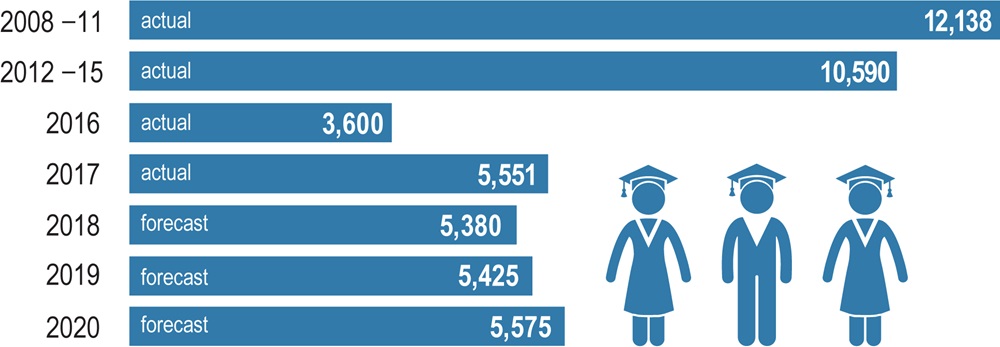Transition to Teaching
2019 A one-time increase in the number of new Ontario teacher licences in 2015 slowed but did not reverse the now three-year trend of improved early-career employment outcomes.
French as a second language and French first language teachers are once again in high demand. First-year unemployment is minimal for these two groups.
English-language education graduates also report much improved job outcomes in the early career years, especially Intermediate-Senior math, science and computer studies qualified teachers.
Annual supply of new Ontario teachers will be much lower and teacher retirements are expected to rise gradually over the remainder of this decade.
This annual rebalancing of supply and demand in the Ontario teacher employment markets in the years ahead means much improved job outcomes for future education graduates, opportunities for underemployed teachers licensed in earlier years, and more vigorous recruitment by Ontario’s schools and school boards.
First-year full employment increased from



Unemployment rate for new English-language teachers in Ontario



Unemployment rate for new English-language teachers in Ontario

Ontario teacher unemployment by language of qualifications

New teachers licensed annually (by year)

First-year Ontario resident teacher unemployment rates by year of survey

First-year Ontario resident teacher unemployment rates by year of survey

This line graph shows unemployment rates of first-year teachers residing in Ontario, by year of Transition to Teaching surveys. Since the 2012 and 2013 surveys, first-year both French- and English- language teachers report considerably lower rates of unemployment. English-language teachers reported 45 per cent unemployment back in 2013 and now, in 2016, 34 per cent. FSL-qualified first-year teacher unemployment peaked at 17 per cent in 2013 and now stands at just five per cent. Unemployment among French-language program graduates peaked at 18 per cent in 2012 and now is down to 9 per cent.
